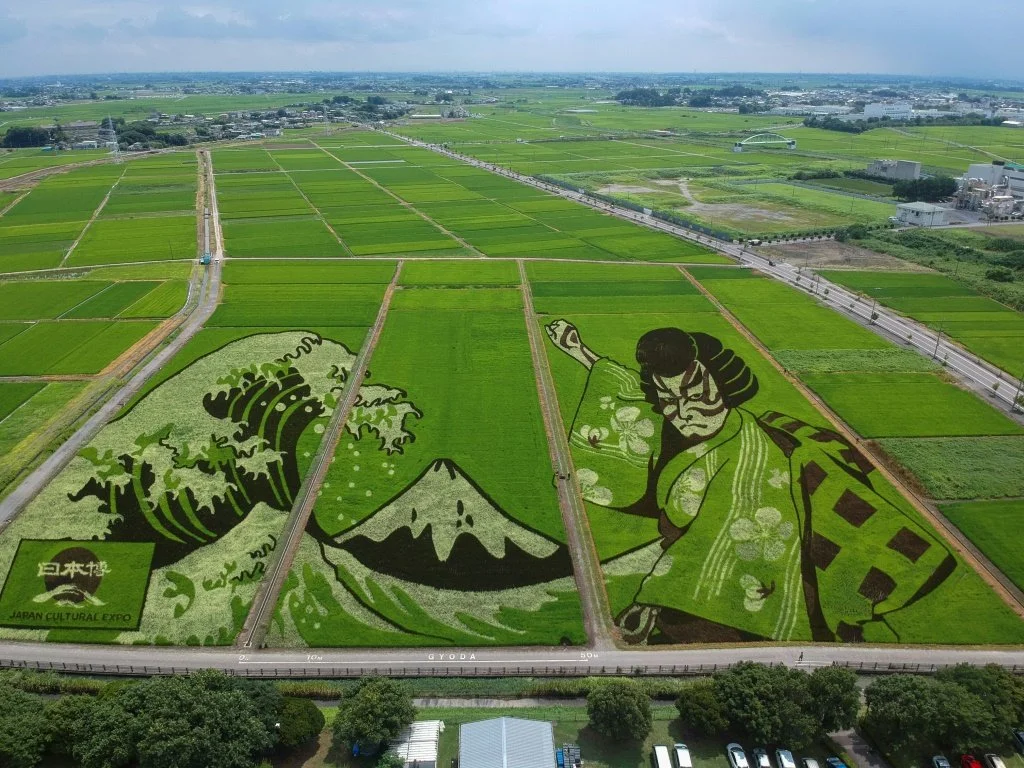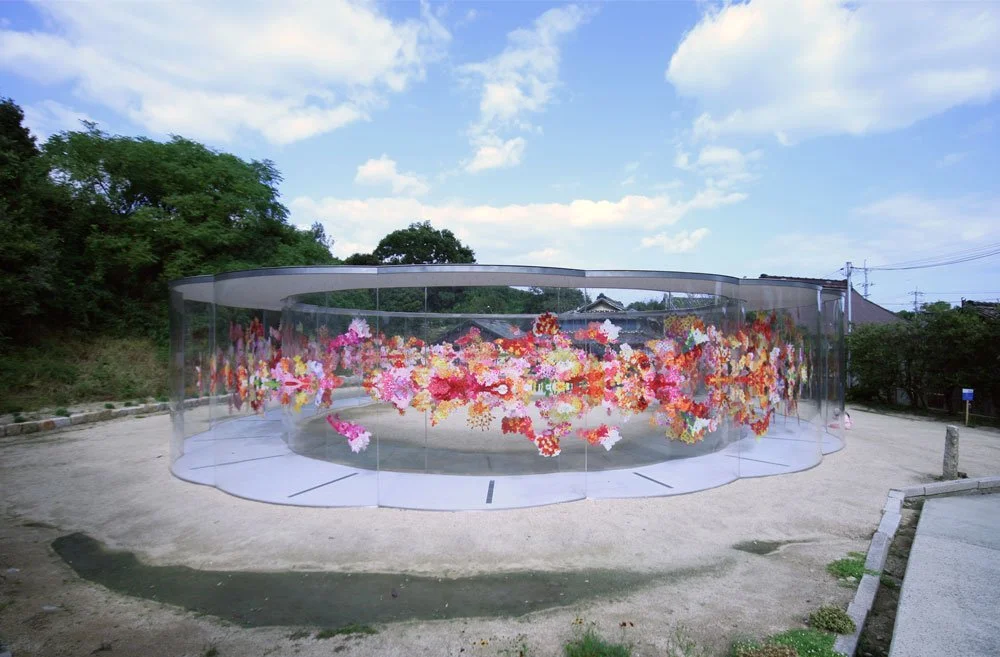How Japan’s Art Islands Are Redefining Travel: A Deep Dive into Naoshima, Teshima & Inujima
Perfect for art and design lovers wanting a deeper, island-based journey.
Why these three tiny islands matter
In the middle of Japan’s Seto Inland Sea, Naoshima, Teshima, and Inujima have quietly pioneered a new model of cultural tourism. What began as a bold experiment by the Benesse Corporation and a visionary lineup of architects and artists has grown into a living laboratory for sustainable design, rural revitalisation, community-first placemaking, and slow art travel. Here, art isn’t placed on white walls for passive viewing—it’s embedded in the landscape, stitched into abandoned homes, and engineered into the ruins of extractive industry. The result is a future-facing, intensely local model for how art can repair, reactivate, and reimagine place.
Naoshima: The flagship of art-in-nature
What makes it special
Tadao Ando’s architecture defines the island: concrete, light, shadow, and silence.
Chichu Art Museum (largely underground) protects the landscape while curating a transcendent dialogue between architecture and works by Claude Monet, James Turrell, and Walter De Maria.
Benesse House is a museum you can sleep in—blurring the boundary between visitor and artwork.
Art House Project in Honmura turns empty village houses into site-specific installations, reconnecting contemporary practice to local stories.
Lee Ufan Museum deepens Naoshima’s meditative ethos through restrained materiality and spatial poetics.
The shoreline pumpkins by Yayoi Kusama have become global icons of playful minimalism.
How to experience it
Stay overnight (ideally two nights) so you can visit major sites without rushing and wander the coastline at sunrise/sunset.
Pre-book Chichu Art Museum time slots; they often sell out.
Explore by bike or local bus; distances are manageable, but hills can be steep.
Plan around museum closure days (commonly Mondays) and shoulder-season ferries.
Teshima: The island that teaches you to slow down
Why it’s unforgettable
Teshima Art Museum (Ryue Nishizawa x Rei Naito) is a near-silent rite of passage. A thin concrete shell opens to sky, water, breeze, and time. The “exhibit” is the choreography of nature itself.
Les Archives du Coeur (Christian Boltanski) invites you to listen to the beating hearts of people around the world—an intimate meditation on memory and mortality.
Teshima Yokoo House radiates psychedelia and reflection, merging domestic space with immersive installations.
Shima Kitchen, a community-powered restaurant and artwork, brings food, sociality, and performance under a single timber roof.
Rice terraces and village-scale art connect contemporary practice to Teshima’s agricultural rhythms.
Practicalities
Rent an e-bike at the port; Teshima’s terrain is undulating, and distances are longer than Naoshima’s.
Book Teshima Art Museum tickets in advance.
Build in downtime—the works here hit harder when you’re unhurried.
Inujima: Post-industrial ruins, reborn
The concept
Inujima is tiny but radical. The Inujima Seirensho Art Museum reuses a defunct copper refinery, turning industrial ruins into a demonstration of low-energy, passive architectural systems (by Hiroshi Sambuichi). Natural airflow replaces mechanical HVAC, recycled materials take center stage, and the landscape’s scars are reinterpreted—not erased.
Don’t miss
Seirensho Art Museum for the architecture alone.
Inujima “Art House Project”—a series of small houses reimagined by different artists/architects that stitch contemporary work back into the living fabric of the island.
Getting there (and away)
Inujima requires careful ferry timing. Connections are limited; check schedules and sequence your day so you don’t get stranded. Consider using Hoden Port (Okayama side) or routing via Naoshima/Teshima with enough buffer.
Sustainability, community, and the Setouchi blueprint
Adaptive reuse: Existing structures are reimagined rather than replaced from village houses to copper refineries.
Landscape preservation: Chichu’s subterranean construction is the emblem of building lightly.
Passive design: Sambuichi’s work on Inujima shows how architecture can learn from wind, light, and terrain.
Creative economy in depopulated regions: These islands demonstrate how culture can reverse economic decline without turning communities into stage sets.
Slow, repeatable tourism: Timed entries, small ferries, and distributed attractions limit overtourism and restore traveller attention.
Practical travel logistics
How to get there
Main gateways:
Takamatsu (Kagawa Prefecture) – the most common jumping-off point for all three islands.
Okayama / Uno Port (Honshu side) – great for Naoshima and connections to Teshima/Inujima.
Typical routes:
To Naoshima: Ferries from Uno Port (Okayama) or Takamatsu Port (Kagawa) to Miyanoura or Honmura ports.
To Teshima: Ferries from Takamatsu, Uno, or Naoshima (check which port—Karato or Ieura—you’re landing at).
To Inujima: Limited services from Hoden Port (Okayama) and seasonal/limited routes from other islands—check times carefully.
When to go
Spring (March–May) and Autumn (September–November): best light, mild temps, fewer typhoons, lush or fiery landscapes.
Summer brings heat, humidity, and typhoon risk—but also long light and island energy.
Winter is quiet, contemplative, and uncrowded—but some services reduce frequency.
Tickets & reservations
Book the Chichu Art Museum and Teshima Art Museum ahead of time.
Benesse House bookings can fill months in advance.
Always confirm closure days (often Mondays) and seasonal ferry schedules before finalising your sequence.
Getting around
IC cards are not always accepted on ferries—carry cash.
Bikes and e-bikes are the most flexible options for Naoshima and Teshima.
Buses connect key sites but run on island time—plan for gaps.
Luggage strategy
Many ports offer coin lockers or luggage delivery services between islands/museums—ideal for hopping between ports on the same day.
Connectivity & etiquette
Cell coverage is decent, but download confirmations, maps, and tickets in advance.
Museums often prohibit photography in galleries—respect the rules and the contemplative atmosphere.
Arrive early to time-slotted spaces; late arrivals may be refused.
Suggested itineraries
2 Days (Art-intensive sampler)
Day 1 – Naoshima
Morning: Arrive at Miyanoura, check into Benesse House or a local guesthouse
Midday: Chichu Art Museum (timed entry), Lee Ufan Museum
Afternoon: Benesse House Museum, shoreline walks, Kusama pumpkin(s)
Evening: Dinner at Benesse House or local izakaya in Miyanoura
Day 2 – Teshima
Early ferry to Teshima
Teshima Art Museum (booked early slot), Les Archives du Coeur, Teshima Yokoo House
Lunch at Shima Kitchen (book ahead)
Late afternoon ferry back to Takamatsu or Naoshima / onward travel
3 Days (Deeper, slower, with Inujima)
Day 1 – Naoshima (East to West)
Art House Project in Honmura (start early)
Ando Museum, Lee Ufan Museum
Sunset coastline stroll; stay on-island
Day 2 – Naoshima (Chichu-focused)
Chichu Art Museum (morning slot)
Benesse House Museum and outdoor works
Late ferry to Teshima; stay on Teshima or Takamatsu
Day 3 – Inujima
Early transfer to Inujima Seirensho Art Museum
Explore Art House Project works
Return via Hoden Port or Takamatsu; overnight in Okayama or onward to Kyoto/Osaka
For architecture & design lovers: don’t miss
The Ando signature elements on Naoshima: exposed concrete, geometric light cuts, and invisible/low-profile landscape interventions.
Nishizawa’s single, thin concrete surface on Teshima—a building that breathes.
Sambuichi’s microclimate-responsive design on Inujima—architecture as living ecology.
Adaptive reuse strategies across all islands as a model for low-carbon, high-cultural-value design.
If you’re timing with the Setouchi Triennale
The Setouchi Triennale (held roughly every three years in multiple spring/summer/autumn sessions) supercharges the region with temporary installations, performances, and expanded routes. If your dates are flexible, consider aligning your trip with it—but book accommodation and museum tickets early. Check the official site for the latest edition’s dates and ferry augmentations.
Budgeting & time expectations
Museum tickets add up—plan a realistic daily cap and prioritise.
Ferry costs are modest but frequent—factor in multiple hops.
Benesse House is a splurge; local guesthouses and minshuku offer budget-friendly, community-based stays.
Food on smaller islands can be limited—book or bring snacks.
Final tips
Treat this as a pilgrimage, not a checklist. The power lies in the spaces between works.
Build meaningful gaps in your schedule to wander villages and talk to locals.
Weather can reshape your plan—have backup port combinations and alternate museum sequences.
Respect the islands as living communities, not open-air museums.








